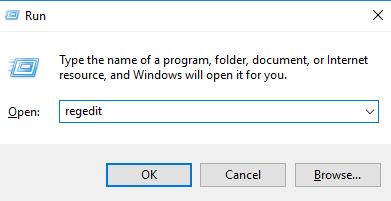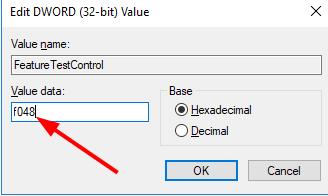Many Windows users have complained they are unable to change the brightness setting of their laptop after an update.
While the dim screen issue could be related to windows update, the problem could also be due to some hardware issue. If you are unable to change the brightness of the laptop screen, this post is just for you.
Here we have provided a few easy-to-follow solutions that can help resolve the issue.
Solution One – Press the brightness increase button during startup
This is a quick fix that can temporarily allow you to decrease/increase the brightness of the laptop screen. You can follow the solution until you find a solution that will permanently resolve the issue.
Here are the steps you need to follow:
- Shut down your laptop and wait for few seconds
- Press the Power button on the laptop. While the laptop is booting, you need to press the brightness up or brightness down button on the keyboard to increase or decrease the brightness of the screen. The brightness increase and decrease signs are displayed on the laptop keyboard.
- Depending on which button you pressed, you could see the brightness of the laptop screen has increased or decreased.
Solution Two – Adjust the brightness level from Power Options
Not many users know the Power options menu gives you the option to tweak laptop screen brightness. The method given below only works in a laptop running Windows 7 and Windows 8.
Here are the steps to follow:
- Press Windows key + R simultaneously on the keyboard. This will invoke the Run command.
- In the Run command box, type powercfg.cpl and hit Enter on the keyboard. This will open the Power Options Menu
- In the Power Options menu, click Change plan settings
- Next, click Change advanced power settings
- In the next window, scroll down to the Display option and press “+” to expand the menu
- In the Display brightness menu, adjust the screen brightness level to your preference.
- Go to the dimmed display brightness option and adjust the screen brightness level to your preference.
- Go down to Enable adaptive brightness option and turn it off.
- Once all brightness settings are tuned to your preferences, you can click Apply and close all windows
Solution Three – Change Registry Settings
Windows allows you to adjust screen brightness settings through Registry. However, making changes in the Registry is risky and if you make an error, it may make the system unstable. Hence, you must try these steps only if you are comfortable working with Windows Registry. Also, always make a registry backup before making any changes to it.
Here are the steps to follow:
- Open Run dialog by pressing Windows key and R simultaneously
- In the Run dialog box, type regedit and click OK

- In the Registry window, go to the left side of the Registry hive and navigate to the following registry key.
- HKEY_LOCAL_MACHINE\SYSTEM\ControlSet001\Control\Class\{4d36e968-e325-11ce-bfc1-08002be10318}\0000” OR “HKEY_LOCAL_MACHINE\SYSTEM\ControlSet001\Control\Class\{4d36e968-e325-11ce-bfc1-08002be10318}\0001“.

- Once you reach the desired Registry key, look for the FeatureTestControl key and double click on it

- Change the value data to “f048” and then click OK.

- Close the registry editor and reboot your laptop.
Solution Four- Update Graphics drivers
There is a possibility the graphics drivers in your laptop are outdated. In that case, you need to update graphics drivers.
Automatic driver update tools offer many benefits, the most important ones being:
- You can update device drivers automatically
- The software scans and updates all outdated or missing drivers at one go
- The tool picks the right drivers for your device and operating system, so you won’t have to worry about installing an incorrect driver by mistake
- Automatic driver updates are 100% safe
Driver Updater is one of the best driver update tools out there. Outbyte Driver Updater will give you access to a database of over 1 million drivers. It will regularly scan your PC, suggesting new driver versions to install. Driver Updater contains drivers for a variety of Windows devices. With just one click, you can update drivers in your system.
Step 1
Click here to Install and launch the app
Step 2
Scan all devices
Step 3
Install or update drivers automatically

Leave a Reply